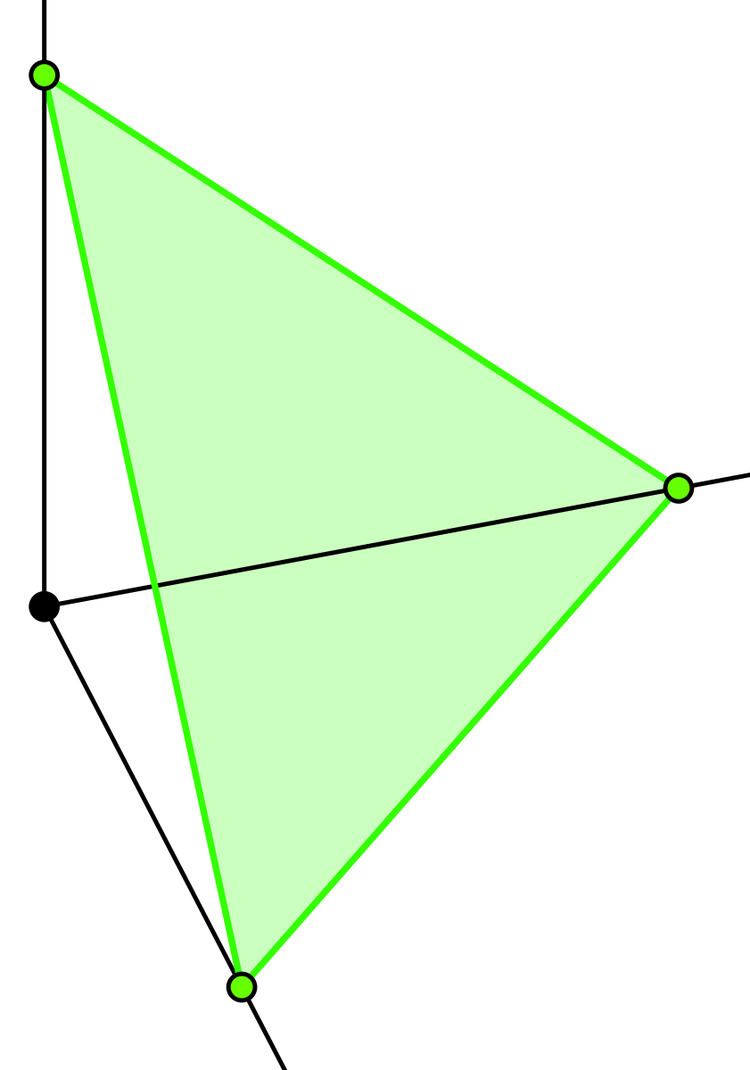 | ||
In geometry, a trirectangular tetrahedron is a tetrahedron where all three face angles at one vertex are right angles. That vertex is called the right angle of the trirectangular tetrahedron and the face opposite it is called the base. The three edges that meet at the right angle are called the legs and the perpendicular from the right angle to the base is called the altitude of the tetrahedron.
Contents
Metric formulas
If the legs have lengths a, b, c, then the trirectangular tetrahedron has the volume
The altitude h satisfies
The area
De Gua's theorem
If the area of the base is
This is a generalization of the Pythagorean theorem to a tetrahedron.
